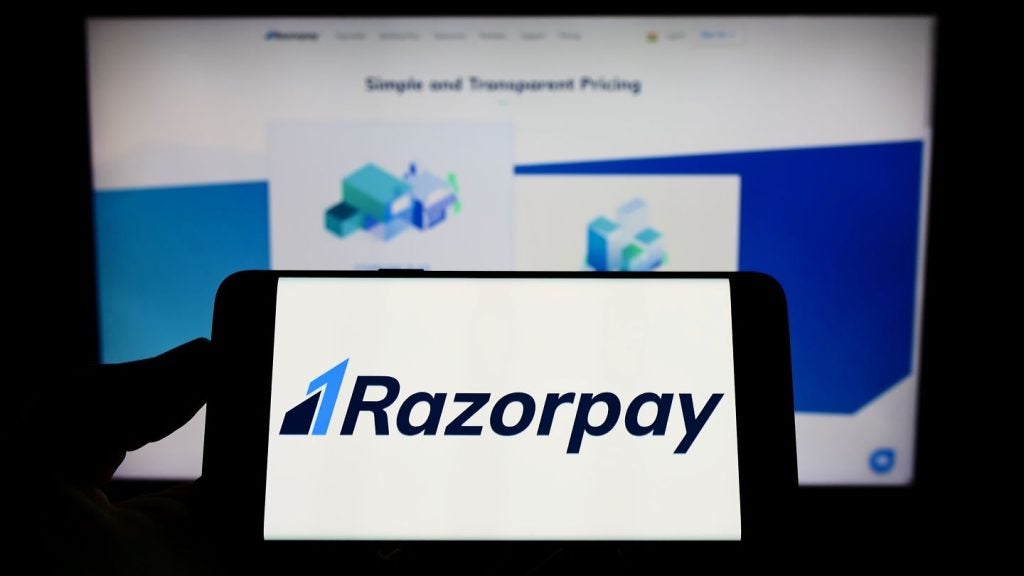undertaken in the UK, Barclaycard has not only significantly
increased its market share, but has also underlined its commitment
to contactless payment with its acquisition of the Goldfish and
Morgan Stanley card portfolios. Victoria Conroy
reports.
The history of the Goldfish and Morgan Stanley card businesses in
the UK is one characterised by highs and lows. The highs include
the Goldfish brand in particular marking out a niche space in UK
credit cards with its market-leading rewards-driven loyalty
programme, which ensured it became one of the most familiar credit
card brands in the UK. The Morgan Stanley range also secured some
degree of visibility, notably in the high-end affluent consumer
segment.
However, their defining attributes were not enough to help either
brand dodge the lows that have afflicted not only Goldfish and
Morgan Stanley, but also every other credit card issuer in the UK.
The lows would also include the ownership of both brands changing
hands with increasing regularity, culminating in the sale to
Barclays earlier this year.
It’s been nearly three years since Lloyds TSB offloaded Goldfish to
Morgan Stanley’s Discover Financial Services, and in February this
year the business was sold to Barclays, which acquired the UK
Goldfish card portfolio consisting of 1.7 million Goldfish and
affinity card accounts with approximately $4 billion of
receivables; the Goldfish brand; its operating facilities; certain
legal entities; and staff. It paid £35 million ($61.8 million).
(see CI 395) At the time, Discover stated that although the
performance of Goldfish was beginning to improve, higher interest
rates and disruption in the UK financial markets, combined with
Discover’s aim of lowering its overall loan exposure, meant the
decision was made to offload Goldfish to shore up Discover’s
capital position.
New cards and features
Now, with its customer numbers rising to 11.9 million, Barclaycard
has announced that the migration process is almost complete, and
has unveiled changes to the Goldfish and Morgan Stanley portfolios
to align the features and benefits of both brands more closely to
its core Barclaycard offerings. The main changes include:
• Four new credit cards being launched;

US Tariffs are shifting - will you react or anticipate?
Don’t let policy changes catch you off guard. Stay proactive with real-time data and expert analysis.
By GlobalData• Two cards being discontinued, reducing the total number of cards
in the range from eleven to nine;
• The Goldfish name being maintained through a new product,
Barclaycard Goldfish;
• The inclusion of contactless payment on 1 million cards;
• Some changes to cashback offerings on certain cards, with
cashback now being credited monthly rather than annually.
The first phase of the migration was completed by 22 September and
all customers will be issued with their new card before 20 October.
All cards will have a new account number and a new PIN, and
customers’ interest rates and credit limits will remain
unchanged.
Amer Sajed, managing director of UK cards at Barclaycard, told CI
that with the acquisition of Goldfish, Barclaycard was signalling
its re-entry into the rewards space, and that existing Goldfish
customers, who had chosen Goldfish precisely because of its rewards
offering, would continue to get “the same, and better”
rewards.
“Our research indicates that customers want rewards, and it’s a
fabulous opportunity to take the Goldfish rewards and expertise,
and offer that to our customers,” he explains.
Sajed says that Barclaycard would ensure that Goldfish customers
continued to receive the same level of rewards on offer as before,
but instead of customers having to request cashback on some
Goldfish products manually in the form of a cheque, they would now
automatically receive cashback monthly in the form of a statement
credit. Previously, there was 1 percent cashback on the first
£2,000 spent and then 1.5 percent thereafter; now, Barclaycard will
offer 1 percent on the first £200 per month spent and 0.5 percent
thereafter.
Existing customers of the Goldfish Rewards, Morgan Stanley
Cashback, Buy & Fly, and Morgan Stanley i24 cards who are
migrated over to the new Barclaycard versions of those cards will
also receive ‘Founder Member’ status – customers who are
pre-selected for special offers such as bonus points, marketing
offers and rewards exclusive to them, and not on offer to new
applicants of those cards.
“This is a new concept in the UK,” Sajed told CI. “It’s about
making these customers feel special.” Sajed also confirmed that the
Visa-branded Goldfish portfolio and the MasterCard-branded Morgan
Stanley portfolio would stay with their respective schemes in order
to provide continuity to customers.
CI asked whether the migration was an opportunity for Barclaycard
to trim less profitable or less creditworthy customers from the
portfolio, but Sajed stated that the issuer would not be “doing an
Egg”, in reference to the bad publicity Egg received earlier this
year when it cut around 150,000 customers, deeming them risky. (see
CI 395)
“What we do on a regular basis is we look at customers who haven’t
been using their cards for some time, and we will go to them and
ask whether they intend to use the card or not. That is standard
practice for dormant accounts,” Sajed says.
In terms of the overall value of the Goldfish/Morgan Stanley
portfolio, Sajed said he was not worried by UK economic turbulence,
and the acquisition still represented “a fantastic deal”. In
addition, Barclays benefited from a lower cost of funding in the UK
than other issuers in the market. Sajed also stated that there had
not been any significant difference in the use of outsourcing of
back-office operations.
“We sold the Goldfish call centre in Cumbernauld, Scotland, to
Scottish & Southern Energy, and we have recruited into our own
customer service centres, both here in the UK and offshore, to
increase our capacity to deal with these new customers,” he
adds.
Contactless as a cornerstone?
It is the inclusion of contactless payment on three cards –
Barclaycard Goldfish, Barclaycard Cashback, and Barclaycard i24 –
that is perhaps the most noteworthy change, and illustrates that
Barclaycard is committed to rolling out contactless payment more
widely in the UK, alongside its Barclaycard OnePulse card launched
in September last year, which incorporates the Oyster transport
ticketing application from Transport for London, the operater of
public transport in the capital.
Contactless technology will be included on the above-mentioned new
versions of cards or replacements for expiring cards as a
compulsory feature, and customers will not have the option of
requesting that it be removed, or requesting the option of a
replacement non-contactless card.
This is in tandem with Barclaycard’s stated aim of having 1 million
contactless cards issued by the end of 2008, and having rolled out
more than 6,000 contactless-enabled terminals across the UK
already, that number is expected to rise to 15,000 by the end of
the year.
Sajed explains: “Barclaycard brought credit cards to the UK 42
years ago. We brought ATMs to the UK. This is just another step in
what we believe is the re-invention of Barclaycard in that we’re
delivering more innovation. This is going back to our heritage of
being innovators.”
Earlier in September, to celebrate the one-year anniversary of the
OnePulse card launch and to herald the success of a contactless
mobile payment trial the issuer undertook in conjunction with Visa
and telecom operator 02, Barclaycard CEO Antony Jenkins announced
that Barclaycard was intent on leading the revolution in the way
people pay for goods and services.
“We want to enable people to pay for things in the most simple and
convenient way possible,” he said. “The chips on credit cards now
have incredible untapped capability, but the plastic around the
chip limits its potential. Take the plastic away and the
possibilities are endless, allowing the customer to pay by using
something that they are already carrying, be it a mobile, key fob
or even via biometrics. This is the company that invented the
credit card in the UK, and now we are going to reinvent it.”
Jenkins added: “The future of Barclaycard is as a payments
business, where we bring two people or businesses together through
payments methods that are smoother, slicker, simpler and safer for
the consumers, and add value to retailers with potential for
increased transaction value and repeat custom. Credit will be one
aspect of what we offer, should the customer want it, but our
vision is far wider than that now.”
Retailers in the pipeline
So far, it is smaller retailer chains and independent merchants who
have shown the most willingness to sign up for contactless, with
the larger supermarket or retail chains, with their high consumer
footfall and volume of low-value transactions, conspicuous by their
absence.
But Barclaycard insists that interest from larger retailers is
there. Many in the industry have argued that it will take the likes
of Tesco or Sainsbury’s to show commitment to contactless in order
to drive adoption among consumers who have so far shown reticence
in using contactless cards in the UK.
Asked by CI whether Barclaycard would consider offering special
terms or discounts to the larger retailers to get them to sign up,
a Barclaycard spokesman said: “If we wish to undertake different
marketing activities to get more merchants to sign up, we’ll do
that, but to achieve 15,000 merchants accepting contactless by the
end of 2008 shows that we don’t need to do anything special or
different.
“We will be announcing some major household-name retailers joining
the contactless revolution in the coming weeks and months.”
The spokesman adds: “It’s a chicken-and-egg situation. At the
moment, retailers are not seeing a lot of contactless cards out
there. When those 1 million cards are out there and people
understand the ease and convenience of using contactless, the
benefits of it to both consumers and merchants will be a lot
clearer.”
Barclaycard OnePulse was launched with much fanfare and announced
the issuer’s belief in contactless payment, but Barclaycard
declined to say how many of these cards it had issued so far.
Barclaycard recently unveiled two new promotions for its OnePulse
card in order to drum up consumer interest, suggesting that uptake
is not as promising as anticipated. As of September 2008, new
customers wanting to apply for OnePulse can choose from two
introductory offers: zero percent on balance transfers for 14
months, with a 2.5 percent balance transfer fee; and zero percent
on balance transfers for 14 months, with a 2.9 percent balance
transfer fee plus 5 percent cashback on Transport for London spend,
and 0.5 percent cashback on all other spend until January
2010.
The issue of transaction limits for contactless purchases is also
one that is gaining in prominence. Designed for high-speed,
low-value payments, contactless transactions in the UK are limited
to transactions worth no more than £10, but Barclaycard has not
entirely ruled out raising this in future.
“It’s something that could potentially be looked at in the future,
but I don’t think that it will happen in the next couple of years,”
Sajed told CI.
Meanwhile, reflecting its aim to be seen as more than just a credit
card issuer and more of a payment innovator, Barclaycard will also
be overhauling its logo and visual identity, breaking away from the
familiar Barclaycard logo on a plastic card.
Jenkins said: “Our new identity expresses where we see the future,
freeing the chip on the credit card from the constraints of the
plastic around it, making the way people pay for things simpler.”
Customers will start to see the new identity being introduced
gradually across Barclaycard’s products and businesses from October
this year.







